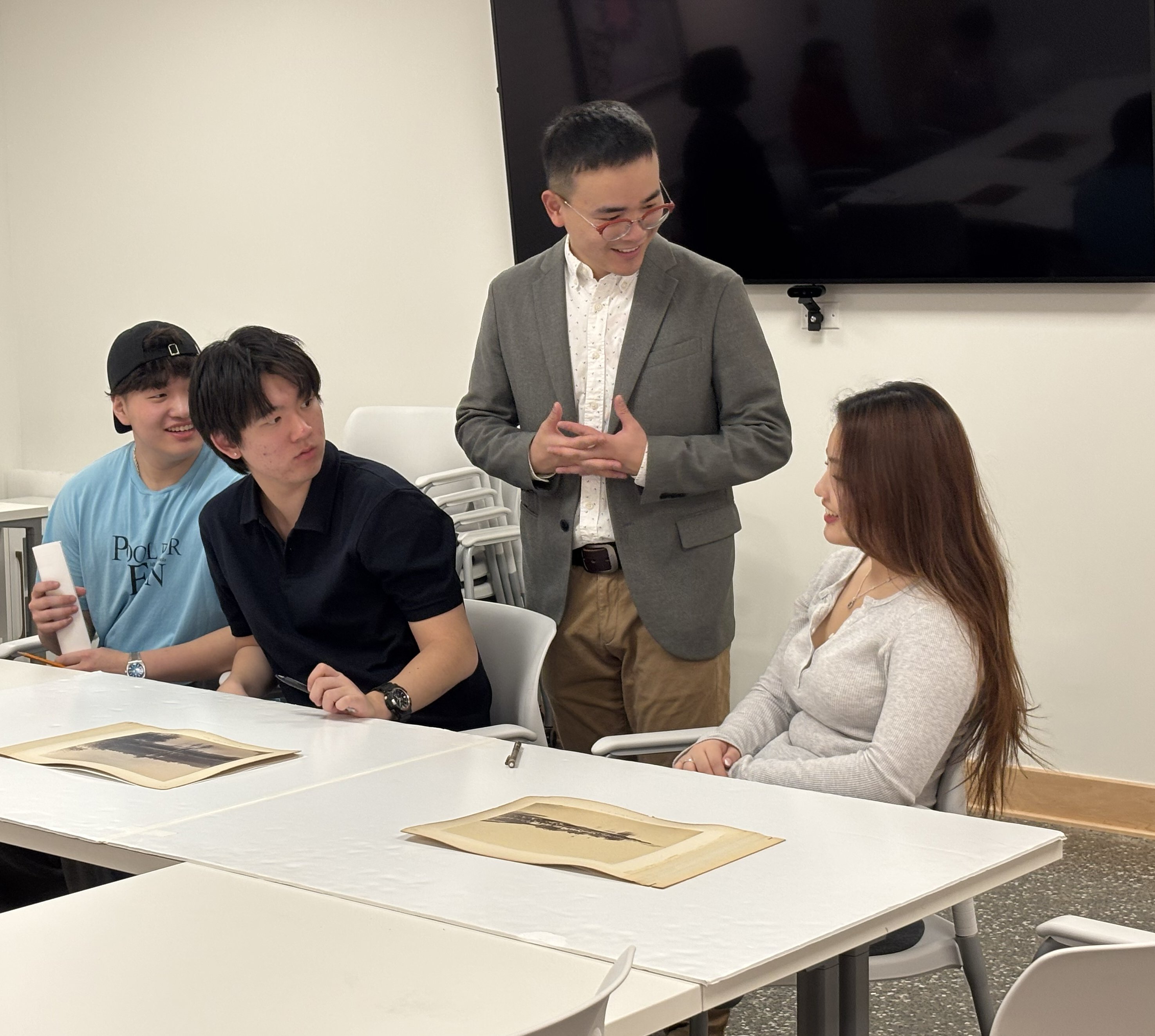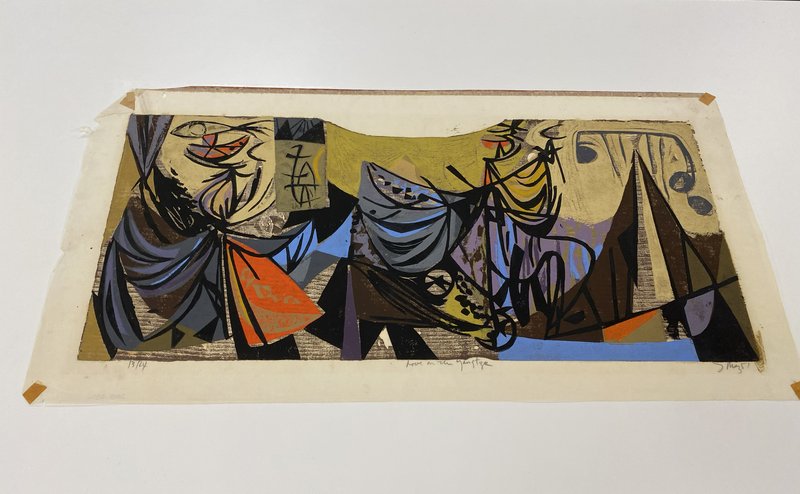Cool Class: Chinese Art
College of Arts and Sciences students immerse themselves in Chinese art and culture while discovering museum curation and conservation careers during a visit to the SU Art Museum.

Exploring diverse artistic traditions is one way students in the College of Arts and Sciences develop global perspectives and enhance their cultural awareness, necessary for success in today’s connected world. Artworks from around the world, including those from China, offer a window into the past and present, showing how civilizations have evolved throughout history.
Students have myriad opportunities to study the history of Chinese art in the course “History of Art 300: Modern and Contemporary Chinese Art,” taught by Yifan Li, a postdoctoral researcher in the Department of Art and Music Histories. Li’s courses on Chinese art and visual culture emphasize the artworks’ distinctive and intricate nature, influenced by exchanges, relationships and activities across national borders, as well as the innovative use of new image-making technologies.
A popular aspect of the class is the hands-on learning opportunities that allow students to examine objects from the SU Art Museum’s collections. During a visit in the spring semester, the class viewed a selection of woodcuts by the Chinese American artist Seong Moy (1921–2013). Woodcut is a printmaking technique where an image is carved into a block of wood, and the raised areas are inked and pressed onto paper to create a print.

One of the works examined by students was Love on the Yangtse (1951), a woodcut print by artist Seong Moy.
Watch the following video, where Li and Kate Holohan, curator of education and academic outreach at the SU Art Museum, discuss a selection of works viewed by the class that day.
By working with the museum’s collections, Li says that this experience not only enhances students’ cultural understanding and fosters critical thinking and creativity, but also exposes them to potential career opportunities in museum curation and conservation.
“The art museum serves as a vital pedagogical resource, enabling faculty members to integrate experiential and community-engaged learning approaches that transcend conventional classroom boundaries,” says Li. “The opportunity to study museum collections highlights the value of deceleration and immersive attention—a learning method that benefits students in their future academic and professional pursuits.”
In Fall 2025, Li will be teaching “HOA 300 M001 Selected Topics: Studies in Asian Art.” This course provides a comprehensive survey of the artistic and cultural traditions of China, Japan and Korea, spanning from the Neolithic period to the present. Through close analysis of artworks across a wide range of media—including bronze vessels, ceramics, Buddhist sculptures, paintings, calligraphy, prints and architecture—students will explore how art reflects and shapes religious traditions, political power and societal transformations.
